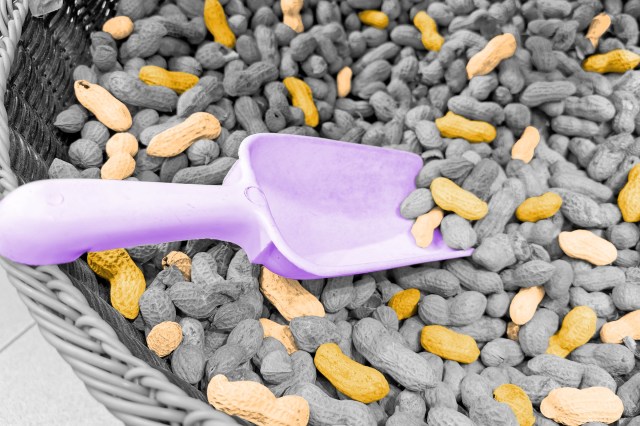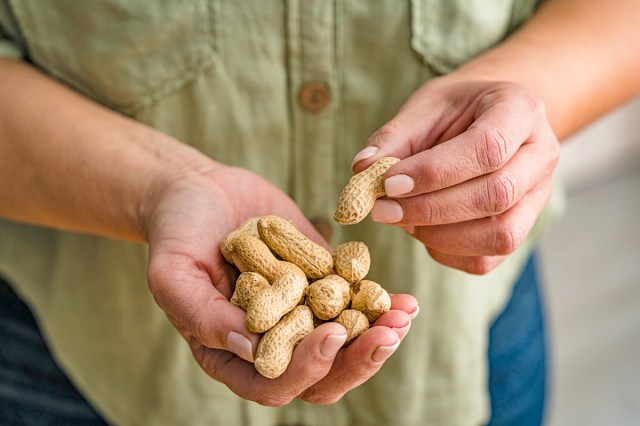
Peanuts
Despite their name and undeniably nutty characteristics, peanuts are not nuts at all. They are, in fact, legumes, a family of plants that produce their fruit in a pod, and they have more in common with snow peas than actual nuts. In botanical terms, true nuts are strictly a particular type of dry fruit that has a single seed, a hard shell, and a protective husk. Peanuts, which grow in pods like other legumes, do not meet this botanical definition.
Peanuts aren’t the only popular food guilty of wielding the “nut” label in spurious fashion. Technically speaking, both coconuts and walnuts are actually a type of fruit called a drupe, rather than being the nuts their names suggest them to be.
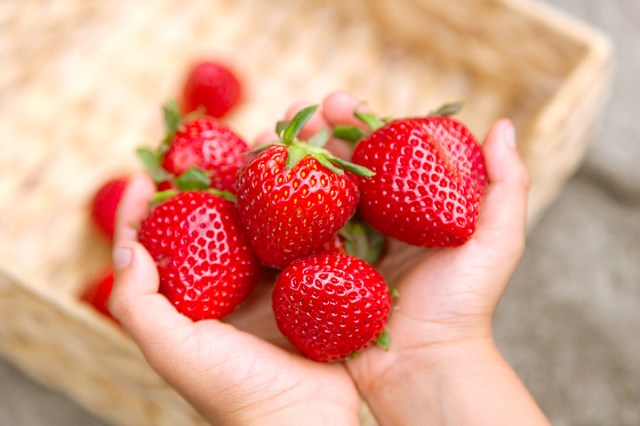
Strawberries
Strawberries quite clearly have the word “berry” in their name, but don’t let that fool you; they’re not berries in the botanical sense. Botanists call the strawberry a “false fruit,” or, if they want to sound clever, a pseudocarp (which sounds more like a fake fish, perhaps further adding to the confusion).
A strawberry is actually a multiple fruit that consists of many tiny individual fruits embedded in a fleshy receptacle. Those white specks on the outside, which we often think are seeds, are actually the true fruits called achenes, and each one surrounds a tiny seed.
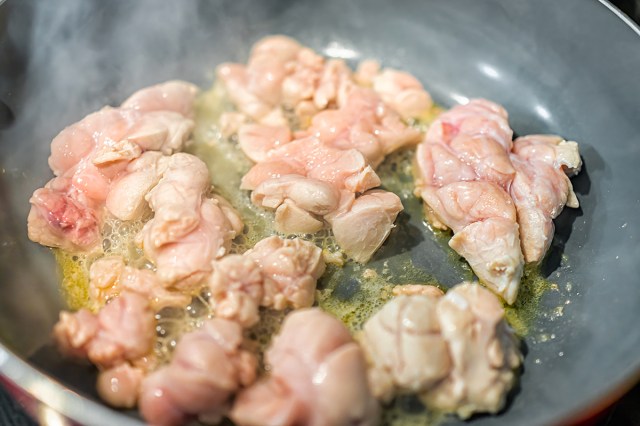
Sweetbreads
Ah, sweet bread! It sounds like something that would be lovely with a cup of coffee, right? Maybe, but not if we’re talking about sweetbreads — spelled as one word — which are neither sweet nor bread. They are, instead, something quite different: organ meats. More specifically, they’re the thymus or pancreas glands of a calf or lamb.
That might not sound too appealing, but sweetbreads are often positively described as having a smooth texture with a mild and creamy flavor. They’ve also become more fashionable in recent years, appearing on the menus of many luxury restaurants — so if you want to be hip, try ordering this trendy offal.
More Interesting Reads
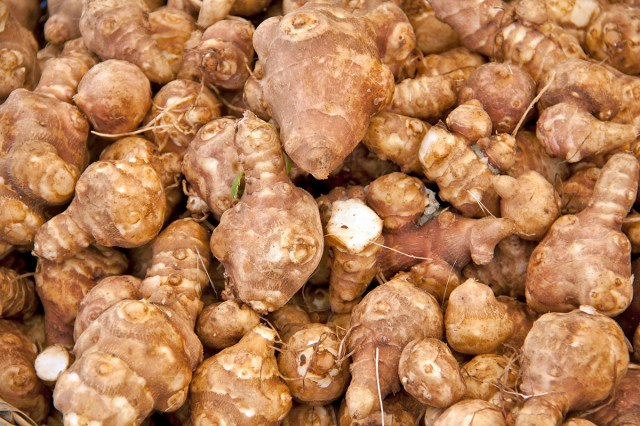
Jerusalem Artichokes
The Jerusalem artichoke is one of the big fibbers of the culinary world. It represents a double misnomer, as it has nothing to do with Jerusalem and it isn’t even an artichoke. These knobby tubers are actually part of the sunflower family and are sometimes called sunchokes to avoid confusion.
The reason these tubers bear the name “artichoke” is simple: They share a similar taste — a delicate, sweet flavor — to the globe-shaped vegetable. As for how “Jerusalem” became part of the name, one theory posits that, when the tuber was introduced into Europe from its native North America, it was given the Italian name “girasol,” meaning sunflower, which was corrupted by English-speakers to “Jerusalem,” and the name stuck. Another theory argues it may have earned the “Jerusalem” label thanks to the pilgrims, who ate the tubers while trying to establish a “new Jerusalem” in the New World. It’s hard to say whether either theory is correct, but one thing’s for certain — these root vegetables don’t come from Jerusalem.
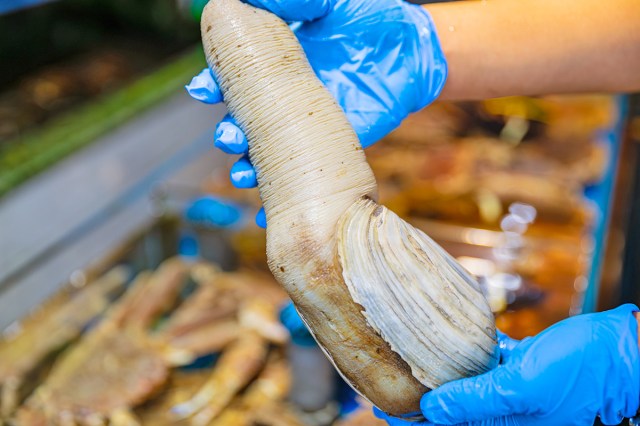
Geoduck
Everything about geoduck is pretty strange. Pronounced “gooey-duck,” this undeniably phallic-looking shellfish has one of the most misleading names in the culinary world. Firstly, it’s not particularly gooey, being variously chewy or crunchy depending on the part of the creature and how it’s prepared.
Secondly, and more importantly, it’s nothing close to a duck: It’s actually the world’s largest burrowing clam, native to the coastal waters of the eastern North Pacific Ocean. They can weigh up to 8 pounds and reach lengths of about 3.3 feet over an impressive lifespan that can exceed 165 years. It’s a bizarre clam with a suitably strange name, which evolved from the Nisqually Indian word gweduc, meaning “dig deep.”
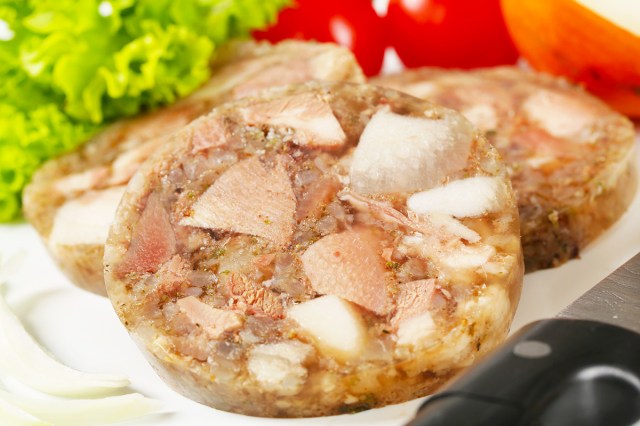
Head Cheese
Head cheese isn’t a great name for a food; it sounds more like a bizarre medical issue or an insult than something someone would want to eat. It’s also a misnomer — or at least half of it is, as there’s no cheese involved. There is, however, plenty of “head.”
Traditionally, head cheese is a type of jelly or aspic made of pig head parts including the ears and cheeks, which is then combined with spices and herbs. The misleading “cheese” label possibly derives from the meat mixture being poured into cheese molds to cool and form, or it may simply have developed because head cheese has been described as having a similar texture to some real cheeses.
The confusing name perhaps explains why head cheese is sometimes instead referred to as “souse” or “brawn” — neither being particularly pretty words in their own right, but they’re at least a slight improvement in terms of accuracy.
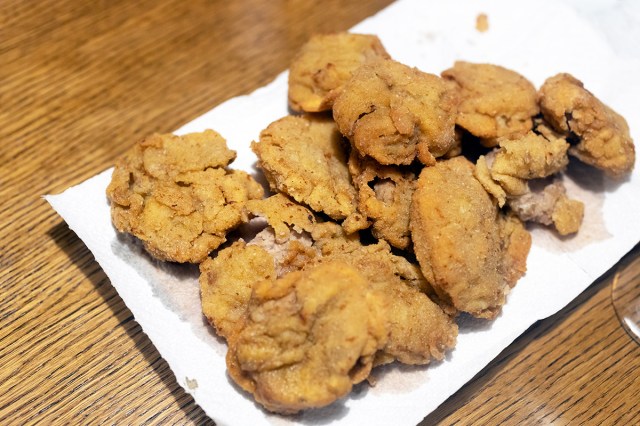
Rocky Mountain Oysters
To the unaware, Rocky Mountain oysters may sound delightful, like some kind of freshwater mollusk plucked from a pristine mountain stream. The reality is quite different.
These charmingly named “oysters” are in fact bull testicles, the consumption of which dates back to the rancher way of life and the expansion into the American and Canadian West. Rather than waste the testicles of their freshly castrated bulls, ranchers served them up battered and fried, often with a side of hot sauce. Rocky Mountain oysters are also known by a variety of other colorful names, including prairie oysters, Montana tendergroins, cowboy caviar, dusted nuts, and swinging beef.

